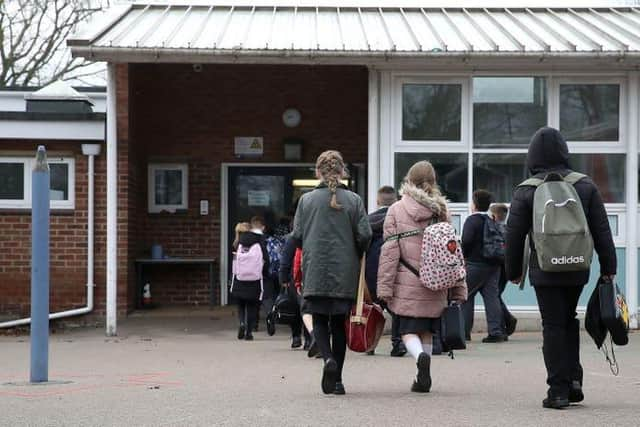More Doncaster secondary school pupils offered a place at top pick school
and live on Freeview channel 276
Department for Education data shows 88 per cent of pupils starting secondary school in Doncaster in September have been offered a place at their preferred school – slightly up from 85.8 per cent last year.
But it still means 401 children have missed out on their top choice.
Advertisement
Hide AdAdvertisement
Hide AdAcross England, 81.1 per cent of children received an offer from their preferred school, down from 82.2 per cent last year.


The Association of School and College Leaders says with high competition for places at schools with good or outstanding Ofsted ratings, the Government should do more to help struggling schools so that children have access to a good place.
Paul Whiteman, general secretary of school leaders’ union NAHT, said secondary school pupils who miss out on their school of choice, may be forced to travel long distances or being separated from their peers.
He added: “The Government’s own figures show that an extra 418,000 secondary school places will be needed in England by 2027, to meet the 14.7% rise in pupil population.
Advertisement
Hide AdAdvertisement
Hide Ad“There is a desperate need for long-term planning that spans all sectors.”
The figures also show the number of applications to secondary schools in Doncaster has decreased by 3.9 per cent to 3,347.
Meanwhile, the proportion of primary school pupils who have been offered their first choice of school is in line with last year's rate at 97.1 per cent.
Across England, the proportion of children receiving an offer from their preferred primary school rose to 91.8 per cent, from 90.2 per cent last year.
Advertisement
Hide AdAdvertisement
Hide AdGeoff Barton, general secretary of the Association of School and College Leaders, said: “Most pupils gain places at their first-choice schools, but a significant number, particularly at secondary level, don’t do so, and this is bound to be very disappointing for the families concerned.
“The solution is for the Government to put more support into struggling schools and make sure every family has access to a good school place.
“Unfortunately, the current system is not working well enough for schools which face the greatest degree of challenge and the communities they serve.”
School standards minister Nick Gibb said: “For the fourth consecutive year more than 90% of children have been offered a place at either their top primary school choice or one of their top three secondary school choices, which I know means a huge amount to families.
Advertisement
Hide AdAdvertisement
Hide Ad“Children and young people are now vastly more likely to be at a good or outstanding school than they were ten years ago, so parents across the country can be confident their child will get the high-quality education they deserve.”
The DfE said several local authorities had advised that a larger than usual number of applications were submitted late. Those are not included in these figures.
The DfE added that there might be an increase in the number of families opting to home school due to the pandemic, while a reduction in migration, because of the pandemic travel controls, may have contributed to the fall.
In these confusing and worrying times, local journalism is more vital than ever. Thanks to everyone who helps us ask the questions that matter by taking out a subscription or buying a paper. We stand together. Liam Hoden, editor.
Comment Guidelines
National World encourages reader discussion on our stories. User feedback, insights and back-and-forth exchanges add a rich layer of context to reporting. Please review our Community Guidelines before commenting.
